
Everest BC + Annapurna BC, autumn 2003
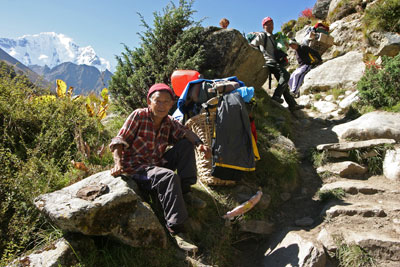
Rest, on the way to Dingboche.
Foreground: Garma Sherpa.
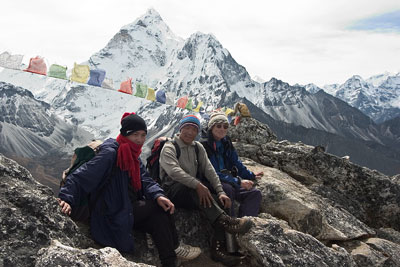
Dorje, Kame and Otto on Nangkartshang Peak (5003m), above Dingboche.
In the background Ama Dablam (6812m).
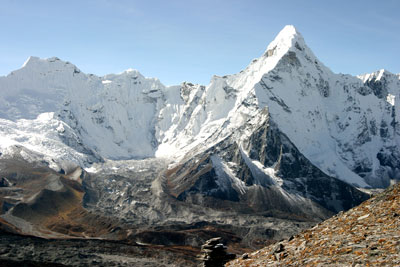
Ama Dablam, as seen from the saddle (5360m) below Chukung Ri (5546m).
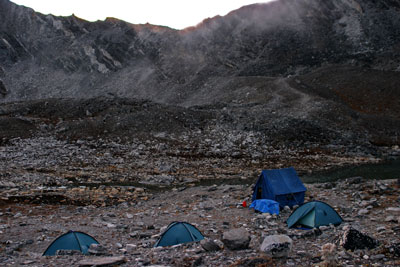
Our camping place (5440m) below Kongma La (5535m). The lowest point on the ridge is the pass.
Garma Sherpa has a headache and feels feverish; we give him Paracetamol.
In 1997, I was in this area with colleague runners from the DSM team Cross-du-Mont Blanc, Leny, Simon, Otto and Huub. In that year I had to give up just before Lobuche because of (altitude) sickness. In 2000, I had another go, this time with Jan. On that occasion I was in very good shape but Jan was struck with altitude sickness in Lobuche and we had to turn back. During that trip we learned that trekking is more enjoyable when one takes things more leisurely.
That is why we prepared an itinerary for this trip that includes an extended acclimatization period at around 4000 meters. However, we also included some extra challenges, namely three high passes. These are the Kongma La between Chukung and Lobuche, the Cho La between Lobuche and Gokyo and the Renjo La between Gokyo and Thame.
Otto for some reason cannot fly out on the same date as Jan and I. In fact he'll start a week later but will catch up with us in Dingboche. From then on he'll have to adapt to our slower tempo even though he can obviously go faster especially since he is never troubled by altitude sickness. For Jan and me this is an opportunity for some relaxed altitude adaptation up to 4200m. The organization of our trek is in the hands of Kame Sherpa and the trekking agency MultiAdventure. MultiAdventure provides the altitude guide and the necessary equipment. Kame hires the cook, cook's assistant and porters.
A week before we are set to leave for Nepal fate strikes - Jan must undergo an emergency operation and while that goes well, he is forced to cancel his trip because he has to remain at home for a period of rehabilitation. However, Jan's wife Anita ceases the opportunity to take his place. Two years ago she was on a trek to the Annapurna Base Camp but had to turn back because of avalanche danger. She likes to repeat that trek. To accommodate the new plan, I manage to delay my departure a couple of weeks and arrive in Kathmandu only a couple of days before Anita gets there and before Otto's return from the Everest area. As a result, we can do the Annapurna trek together.
As our Everest trek follows a fairly unusual route you may be interested in a more detailed itinerary, see route details. Like me, you may come to the conclusion that for certain stages, we should really have reserved more time. Avoiding unnecessary effort raises the chances of success.
The stages and the day excursions have been chosen in such a way that a good adaptation to the altitude is assured for most people. In Dingboche and in Chukung we worked at the acclimatization up to 5000m. Chukung, at 4750m, is ideally situated for this purpose. From there there is an easy walk in the direction of the Base Camp for the climbing of Island Peak and you can also go to a higher altitude in a rewarding trip to the Chukung Ri. I went no further than the saddle at 5360m. From there one has a fantastic view towards the massif of the Ama Dablam, the Nuptse, Lhotse, Lhotse Sar, Island Peak, Makalu and the beautiful summit of the Pumori.
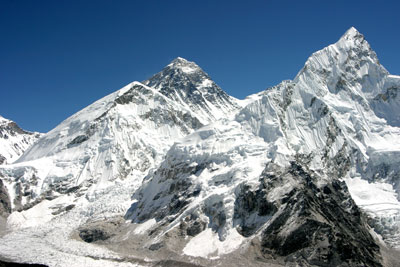
From Kala Pattar (5550m): Everest (8850m) in the centre, to the right Nuptse (7861m).
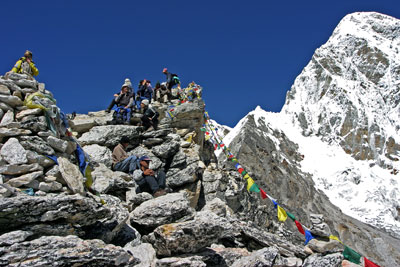
Crowded Kala Pattar (5550m).
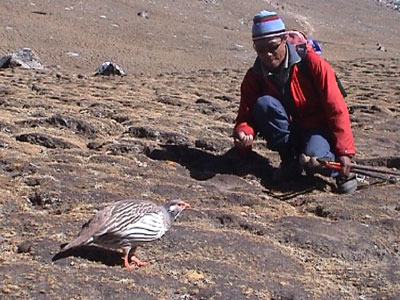
On our way to Kala Pattar a Tibetan Snowcock is interested in Kame's cookies.
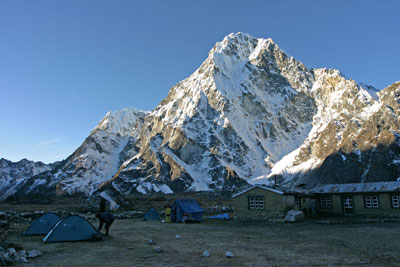
Dzonglha (4850m).
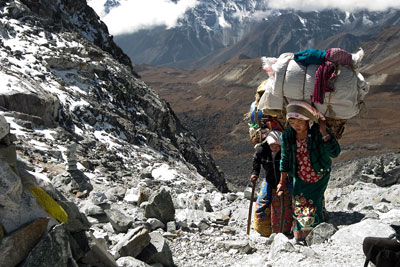
Female porters on the track to Cho La.
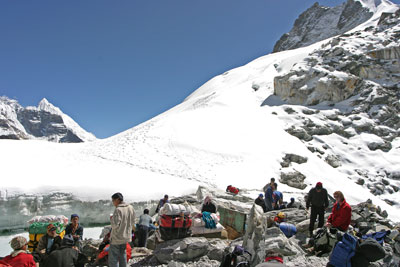
Cho La (5420m).
Some examples:
- after a stage of six hours with an ascend of over 700 meters, in the camp below Kongma La, I note in my diary "why do people do this to themselves. I do not believe that I walked a heavier stage in my life",
- at the lakes behind Gokyo I do not come out of my tent the first evening and fail to to take any pictures of the sun set. A pity, because Otto took some splendid photographs from a nearby hillock.
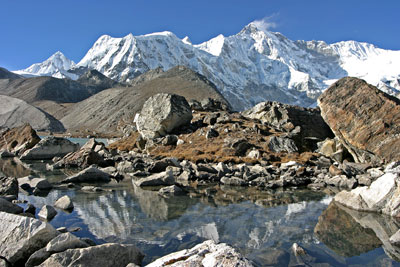
Gokyo lakes (5150m) near the Nepali basecamp for climbing Cho Oyu (8153m). This basecamp is not popular - most climbers prefer the one at the Tibetan side.
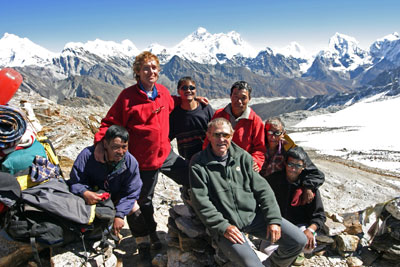
In de Renjo La (5340m), The last high pass in our trekking.
Without these people I never could have done this trekking.
We will go to the Annapurna Base Camp.
Annapurna Sanctuary
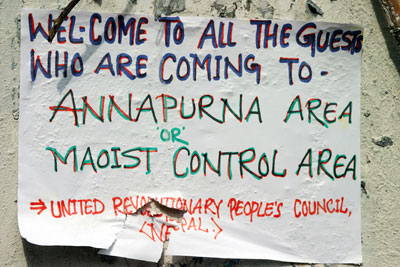
When we left Pokhara for Nayapul we had first to pay NRs 1200 to the club of trekking agents. That was because we had not involved a regular trekking office. One came to that amount by asking NRs 100 per day for each Nepali in the party. That was the legal form of extortion. In Nayapul a contribution had to be made in the fund of the rafters association. This time it is something of between 100 and 200 roepies for the whole group.
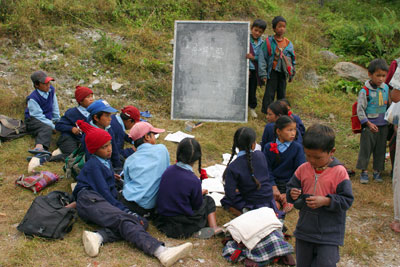
Open air schoolclass in Gurjung.
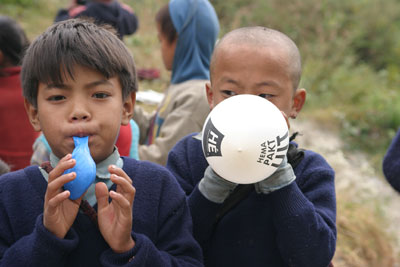
Also Nepali children like to play with a balloon.
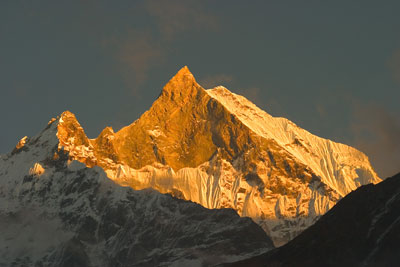
Machapuchre (6993m) at subset.
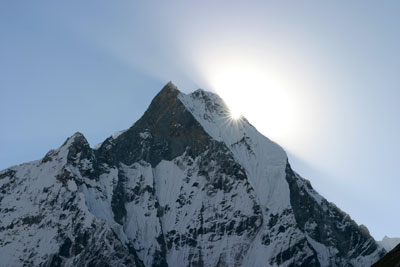
Machapuchre (6993m) at sunrise.
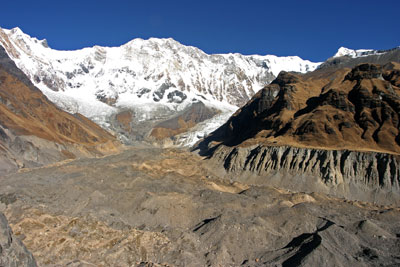
Annapurna-I-South face (8091m).
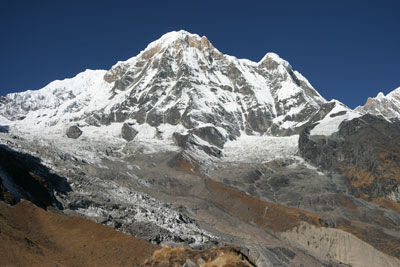
Annapurna South (7219m).
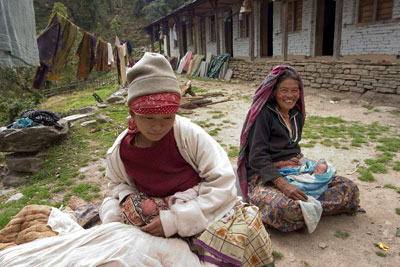
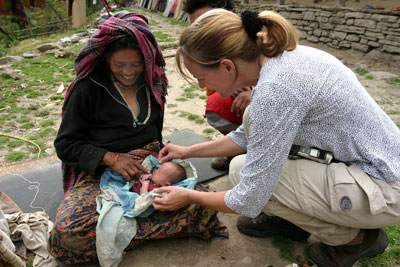
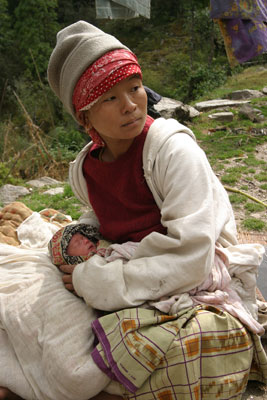
(In 2005 I passed Chomrong again and I managed to see the family again. One of the twins had died).
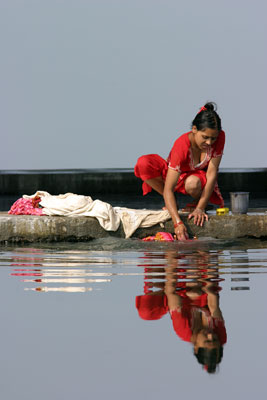
Washing clothes in Pewa lake.